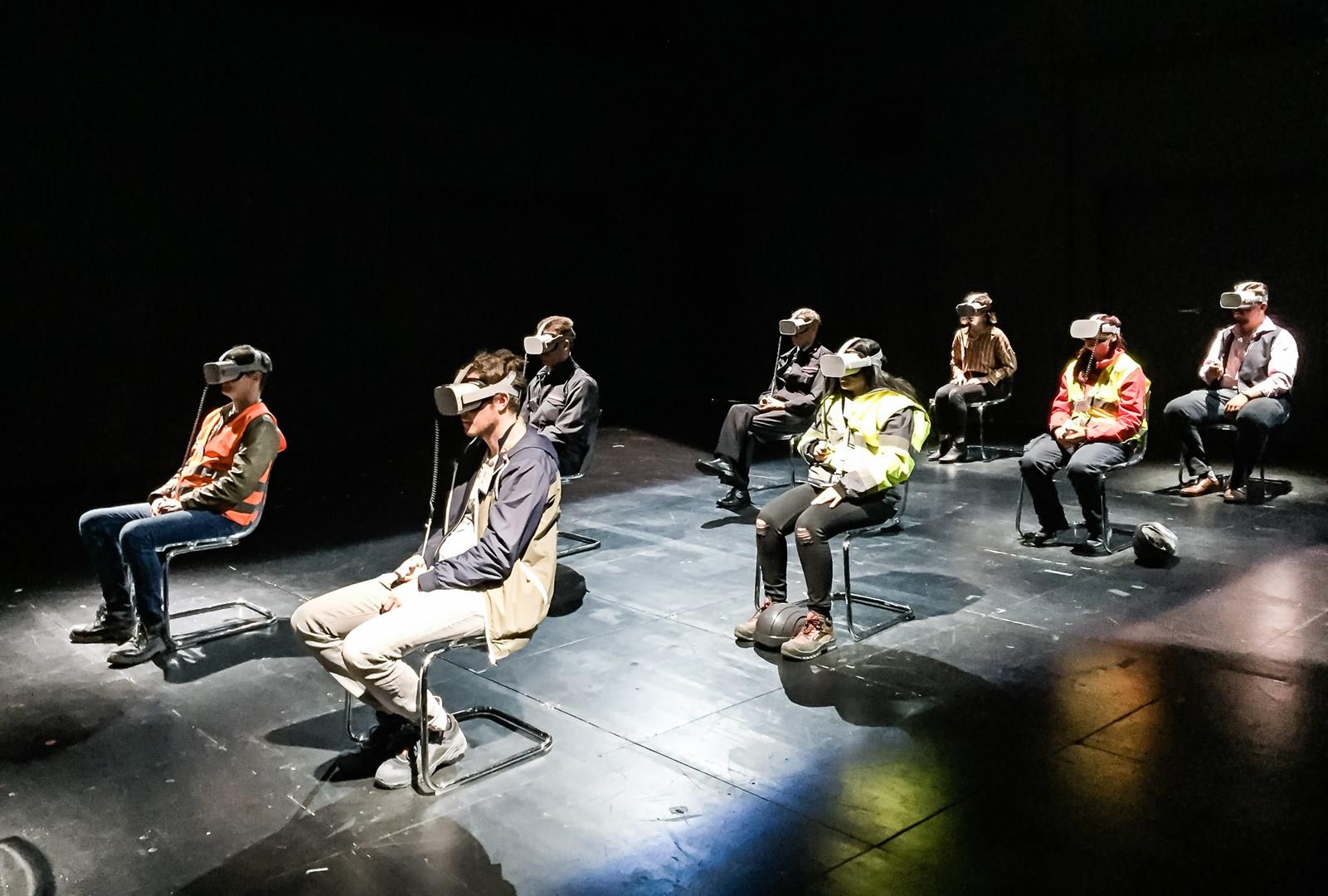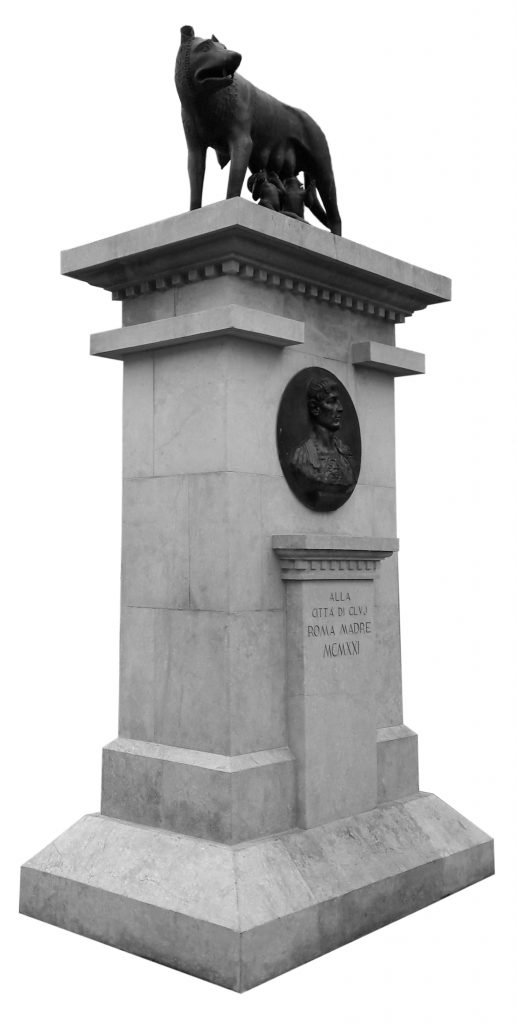Ghosts In Virtual Spaces
UTE’s cooperative education project Digital Natives 2nd part “Digi /topia“ and „Digi / love“ premiered in Cologne
Here is what Ana Tasic, part of UTE’s journalist network Conflict Zones, based in Belgrad experienced.

As a part of the “Digital Natives” project, created by Union des Théâtres de l’Europe, “Digi/topia” directed by Bassam Ghazi, premiered at Schauspiel Köln on May 17, 2019. The starting point of “Digital Natives”, which started in June 2018 and was closed in June 2019, was to explore the balance between the digital and analogue world. “Digi/topia” was an explorative performance and visionary lab, in which thirty performers aged 13 to 78 took part. They explored utopian and dystopian meanings of living in our digital world and present their investigations in a performative experiment.
Director Ghazi explained in an interview the circumstances of the creative process: ”During the rehearsals, we were mostly talking about the changes in everyday life. Some were saying: Thank God for these changes, while the others were at the opposite side, thinking about wanting to free themselves from the technological progress, close their eyes and die. Some young people were critical towards technological changes, without any difference in regards to the older generations.” This production represents the continuation of Ghazi’s research on social changes in the context of new media: “Before we did “Digi/topia and “Concord Floral”, we had a play which was called “Real Fake”. There was a lot about what’s going in the Internet, how it creates new identities. We are creating new identities to show the outside world what we are like, while we move away from reality. So the question was: how much real and how much fake is in my identity, and in the end, what’s going to make me more human?”
“Digi/topia” is an interactive and ambient play, performed in procession, in different spaces of the construction site of the Cologne theatre, in the halls, little rooms, spacious cellars, but also on the stage (under construction). Each group of about a dozen spectators follows the performers through different fragments of the play. From the first scene with a VR-goggle mask for seeing robots play, through the survey in which we had to answer about our digital and online routines, (and) the scene where we got security clothes and helmets to make a tour of the impressive theatre site under construction. In the last scene of the performance, every spectator got a tablet and had to choose a character, to generate the profile of his own avatar. The performance illustrated challenging fragments of the bright and dark sides of our fast-changing world.
In the fifteenth scene of the play, we followed the performer who was playing the lover, overjoyfully speaking about his virtual love: „My love is perfect. Her algorithms are perfect. Perfect for me. I can do without physicality because everything else is right. It is perfect. I don’t need a body, no flesh and blood. I can finally be me.” The motivation to include the scene in the performance has been, as Ghazi said: “He just speaks with her, nothing more, and that’s enough for him.” Ghazi also explained that the group have been talking a lot about love during rehearsals: the fear of changing the essence of relationships in the future was dominant: “The Tinder and other dating apps phenomenon was present as well as the question about how we meet nowadays. The first contact happens more and more via Internet. This is different than twenty years ago. Young people today consider that their digital identity very important, even if fake moments are widespread. They somehow create a new person… Young people are afraid of how love will look like in the future. They seem to be lost, as relationships change rapidly. Looking at Netflix, one can find many series and movies where people fall in love with robots and artificial intelligence. That is one of the scenarios of the future, where human relationships will not anymore be in the focus. Mixed relationships between humans and machines will be central.”
A day after the “Digi/ topia”-premiere, the conference “Digi/love” was held, as another part of the “Digital Natives” project. The aim of the conference was to explore the changes of love relationships in the digital era: What will tomorrow’s love look like? How do social media change our relationships and our view of sex, body and community? The idea for having a conference was inspired by the creative process of “Digi/topia”, as assistant director Saliha Shagasi explained: “During our first rehearsals, we noticed that the subject of love is a subject that probably preoccupies everybody, whether in a good way or in a bad, who knows, but it is a subject which comes up, again and again. And in the play we couldn’t give that much space to it. There is a scene which explicitly deals with the subject of love, but that doesn’t mean that the entire play deals explicitly with love. That’s why we thought, we should organise a conference precisely on this subject, and because we have so many generations involved, it is exciting to see how loving and love have changed, and how different generations regard these matters, but also how each generation condemns or judges each other in this context.”
The first input was given by Stephan Porombka, professor at Freie Universtität Berlin, author of several books about changes in contemporary love relationships. He spoke about new circumstances in everyday life, in terms of being permanently online, in constant connection with each other: „This is a state only we know, unexperienced to former generations, which throws us, and that’s important, into a state of permanent experimentation… Regarding love or romantic relationship, it is absolutely clear: if we can be permanently online, we can be permanently connected. In other words, romantic relationships are permanently under the presence shock, problems occur due to this unique “fabrication” of presence. By developing something that is called spacing in psychology in romantic relationships, we tend to solve it. That means, we are trying to establish roles within which we are moving.”
Psychological relationship aspects in the digital world are in the focus of Sherry Turkle’s books. In “Alone Together” (2011), she writes: “These days, insecure in our relationships and anxious about intimacy, we look to technology for ways to be in relationships and protect ourselves from them at the same time. This can happen when one is finding one’s way through a blizzard of text messages; it can happen when interacting with a robot. I feel witness for a third time to a turning point in our expectations of technology and ourselves. We bend to the inanimate with new solicitude. We fear the risks and disappointments of relationships with our fellow humans. We expect more from technology and less from each other.” Technology is indeed seductive when facing our own vulnerabilities. We are lonely but we fear intimacy. Digital connections and robots offer illusion of companionship without the real demands. We are more and more connected to each other, but essentially more and more alone, without true love.
This real and dystopic image at the same time, the mirror of our world, is a kind of radicalization of Fromm’s critical discussions about love in the Western civilization. In his seminal book „The Art of Loving“ (1956), Fromm claimed that our Western capitalism does not encourage true love: „No objective observer of our Western life can doubt that love is a relatively rare phenomenon, and that its place is taken by a number of forms of pseudo-love which are in reality so many forms of the disintegration of love.“ He also wrote that modern man was alienated from himself, from his fellow men, and from nature: „While everybody tries to be as close as possible to the rest, everybody remains utterly alone, pervaded by the deep sense of insecurity, anxiety and guilt which always results when human separateness cannot be overcome. Our civilization offers many palliatives which help people to be consciously unaware of this aloneness.“. Related to this, we can conclude that the relationships between men and robots, as well as the virtual substitutions of real love relationships of our times, could be regarded as the Fromm’s palliatives which alienate us from our beings. If they are not mere platforms for building real love, true connections in the material world, virtual relationships are nothing but the shadows of the real ones. They are forms of pseudo-love that Fromm wrote about. Captured ghosts in virtual spaces.
Published on 18 June 2019


